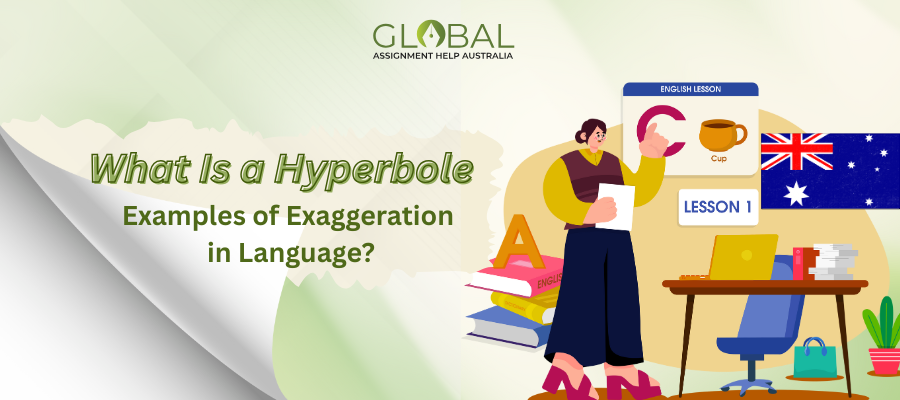 Offers
New
Order Now
Offers
New
Order Now
Have you ever heard someone say "time is money"? Well, it is a metaphor- compact, vivid and symbolic. What about this one: "Spending time is like spending money"? It is an analogy examples; longer, clearer and created to explain. At first glance, both might look similar to you, but their purpose and design differ significantly.
In this blog, we will break down the confusion between analogy vs. metaphor by providing you with precise meanings, types, examples and practical tips. It is beneficial for academic writers who are aiming to strengthen clarity, give depth and express themselves.
An analogy explains an idea by comparing it to something more familiar. It helps to simplify complex or typical concepts. Analogies are usually followed by an explanation of how topics are similar, which allows the readers to make the connection between them.
After learning what analogies meaning, let us see what the different kinds of analogies are.
So, these are the different types of analogies. Moving on, next, you will see the meaning of a metaphor.
A metaphor makes a direct comparison between two unrelated things. You do it add meaning, emotion or imagery without using "like or as". It is a powerful tool in academic writing to express complex concepts using different analogies. It helps the readers to understand challenging or complicated topics.
So, this what is a metaphor example looks like, and it must be clear to you how two things that are different are compared together. After this, let us see its different types.
Scale up with Our Accurate Writing Tools!
Paraphrasing Tool
Get Error-free Paraphrasing
Plagiarism Checker
Avail 100% Original Work
Grammar Checker
Obtain a Flawless Task
Knowing the different types of metaphors will help you to decide which one suits your paper. So, let's begin!
These are different types of metaphors. Now, let us see the difference between analogy vs. metaphor.
After knowing the meaning and types of analogy and metaphor, let's see what sets these two apart from each other. It will make the distinction between the two clearer to you.
| Aspect | Analogy | Metaphor |
| Purpose | It explains or clarifies by comparing relations | It adds emotion, symbolism, or imagery |
| Structure | Mostly uses "like" or "just as...so.." | There is a direct comparison often like, X is Y |
| Length | It is usually longer and more detailed | Typically, it is more compact and shorter |
| Use in Writing | Very common in academic, technical, and persuasive writing | Frequently used in poetry, rhetorical speeches or fiction |
| Relationship | Demonstrates functional relationship or logical similarity | Showcases emotional association or symbolic similarity |
| Interpretation | Used for clarity, rationalize, and is meant to enhance understanding | Used to create imagination, figurative and is often open to interpretations. |
| Examples | A battery powers a phone like food fuels the body | Her fingers danced across the keyboard. |
So, here you go. Right here is the difference between analogy and metaphor. Now that you know this, let's see when you should use them.
It is vital to know when you must use analogy and metaphor. It will help you from making any mistakes in your paper. So ,let's start.
1. To Clarify Complex Ideas
When you want to explain complex or new, unfamiliar concepts. It compares them to things your readers already understand.
2. Academic or Technical Writing
They are ideal for essays, instructions or research, as they help to simplify dense materials and technical topics, making them easier to understand.
3. To Show Logical Relationships
They also underlines structural or functional similarities that allow readers to follow your reasoning, processes or show cause and effect connections clearly.
4. When Teaching or Presenting
Analogies also help in engaging diverse readers by making new details more relatable and woven into everyday experiences.
5. To Persuade with Logic
They also help in strengthening arguments with rational comparisons, as they appeal to reason rather than emotions or stylistic flair.
1. To Create Emotional Impact
Metaphors paint a vivid picture and also evoke emotions, making abstract feelings more relatable, and so it is deeply felt by the reader.
2. In Creative Writing
It is perfect for fiction, poetry, or expressive nonfiction, symbolism, and metaphors improve beauty, and add emotional depth to your language.
3. To Inspire Imagination
They also help the reader to think philosophically or symbolically, boost abstract thought and provide deeper engagement with your message.
4. For Expressive Simplicity
Metaphors also simplify complex emotions or thoughts into short, memorable terms or phrases that resonate with the readers instantly and also leave a strong impression.
5. To Elevate Style
If used well, metaphors also enhance tone and voice, which makes your writing more artistic, emotionally enriching and compelling.
So, these are the places where you can use metaphors and analogies. If you need more in-depth detail, you can get essay writing services.
Go Ahead and Check Out Our Customer Reviews
This section will teach you how to use analogies and metaphors to enhance your academic writing. It will also help you to score good marks and create an impression on the readers. So, let's see how.
Analogies and metaphors help you to simplify abstract or complicated academic ideas by tying them to familiar experiences or objects. It makes the subject you are trying to explain to the reader more accessible.
A well-placed analogy or metaphor makes dense academic content more engaging, which pushes the readers to continue reading. You can do it by adding a creative or human touch to an otherwise dull material.
When you are trying your hand at persuasive writing, analogies are especially effective, as they provide logical parallels that cement your arguments. Moreover, it also helps the reader to understand the cause-and-effect relation more easily.
Academic writing usually benefits from interdisciplinary thinking. Metaphors help to bridge that gap by showcasing how a theory in one field resembles or resonates with another while also boosting deeper insight.
You can use metaphors repeatedly to explain theoretical models, like describing memory as a filing cabinet". It helps the readers to picture abstract systems and remember them more easily.
Instead of lengthy explanations, you can use an analogy, which will help in communicating complex ideas more easily and concisely. This also saves space while also increasing clarity and the depth of your understanding.
Utilizing metaphorical lingo helps you to describe research problems that will provide a new insight to you. For example, describing a data bottleneck as a "traffic jam" may illustrate its structure or cause.
Metaphors are handy in more extended essays or theses, as they provide a consistent thematic thread or narrative arc. Ultimately, it improves cohesion and makes your paper easy to read and captivating.
If you use it artfully, analogies challenge readers to engage critically with your content if you compare similarities and differences between concepts, and it also deepens comprehension and analytical thinking.
Although powerful, analogies and metaphors can also become confusing or misleading if you stretch them too far or use them in an improper manner. So, you must use them with precision and ensure they align with your academic tone.
This is how analogies vs metaphor meaning helps in academic writing. If you have to write a compelling piece for your homework and if you are feeling stuck, then you can also seek homework help from experts.
Now, let's see some examples from literature and academia to understand how you can weave analogies and metaphors.
1.Literature- Orwell's Animal Farm
Author George Orwell uses metaphor in his book Animal Farm, where he compares animals to political figures. The book critiques totalitarianism by shifting historical events into a powerful allegory.
2. Literature- Shakespeare's All the World's a Stage
In his book "As You Like It", Shakespeare famously wrote "All the World's a Stage"; he uses a metaphor to compare life to a theatrical performance. It emphasizes the role people play in different stages of life.
3. Economics- Adam Smith's Invisible Hand"
Adam Smith's use of the metaphor "invisible hand" illuminates how people who are pursuing self-interest can unknowingly contribute to the overall economic good.
4. Psychology- Brain as a "Computer"
You must have seen cognitive psychology often relying on the computer analogy to demonstrate how the brain processes information. It makes complex cognitive ideas more relatable.
5. Education- "Scaffolding" In Learning
"Scaffolding" is a metaphor used for the interim support educators give to help learners progress towards a stronger comprehension and independence.
These examples make it clear how analogies and metaphors are used in different fields. You can also take assistance from experts at Assignment Help Australia to clear any confusion. Let's see what you must avoid when using either literary device.
The title itself is enough to tell you what we will discuss next, so let's jump straight in.
1. Overextending the Metaphor or Analogy
If you stretch their use too far, it can confuse the readers or lead to inaccuracies.
2.Mixing Metaphors
If you combine unrelated metaphors, it weakens clarity and coherence.
3. Utilizing Cliches or Dead Metaphors
Using overused metaphors will not create any impact and can also feel unoriginal or lazy.
4. Being Too Abstract
On the off chance that the comparison is unclear or too vague, it will create trouble in understanding rather than helping it.
5. Ignoring Audience or Context
Some metaphors may not translate well across cultures or different academic fields.
6. Replacing Critical Analysis with Figurative Language
Lastly, you must avoid using metaphors where a precise, evidence-rich explanation is required.
These are some mistakes that you must avoid when using any of the above-mentioned literary devices.
This is where we leave you. We hope by now you understand the difference between analogy vs. metaphor. In the end, you must ensure that you use either of them with caution because overuse or incorrect use will create a negative impact on your writing. So, take advantage of the blog and produce a paper that spells perfection. Best of luck!
You May Also Like To Read :

Grab this exclusive offer and start your journey to savings today! Act quickly, as this special offer won't be around for long!

This blog explains what is a hyperbole, provides engaging examples, & explores how to use hyperbole.

Explore 150+ funny debate topics to spark laughter, creativity, and lively discussions in 2025

Cross-Sectional Study basics explained with steps, examples, and comparisons.
Limited Time Offer
Exclusive Library Membership + FREE Wallet Balance
1 Month Access !
5000 Student Samples
+10,000 Answers by Experts
Get $300 Now
Update your Number





